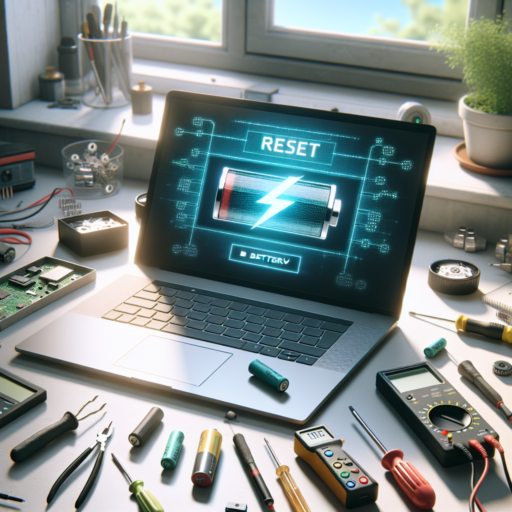Why You Need to Recalibrate Your Phone Battery
Recalibrating your phone battery might seem like an unnecessary chore, but it’s crucial for maintaining your device’s health and efficiency. Over time, your smartphone’s battery life can start to degrade, not because the physical battery is wearing out faster than expected, but due to the device’s inability to accurately measure the remaining battery life. This discrepancy can lead to unexpected shutdowns, reduced performance, and a frustrating user experience.
Improves Battery Life Accuracy
One of the main reasons to recalibrate your phone battery is to improve the accuracy of the battery life indicator. Without regular recalibration, your phone might indicate it has more or less charge than it actually does. This misreading can prevent you from accurately planning your usage and charge times, potentially leaving you without a working phone when you need it most. Recalibration helps ensure that your phone’s battery percentage reflects its true capacity, allowing for more reliable use.
Prevents Unexpected Shutdowns
Unexpected shutdowns are more than just annoying; they can disrupt your day and result in data loss. When your phone’s battery system is miscalibrated, it may believe there’s sufficient charge left, only to suddenly power off. Regular recalibration teaches your phone to better predict battery depletion, significantly reducing the chances of your phone turning off at critical moments. This not only enhances your user experience but also safeguards your data and productivity.
Recalibrating your phone battery is a simple yet effective way to address and mitigate these issues. By maintaining your device’s ability to correctly gauge battery life, you ensure smoother performance and extend the overall lifespan of your smartphone. It’s a minor investment in time that pays off by keeping your device reliable and avoiding premature battery replacement.
Signs Your Phone Battery Needs Recalibration
Identifying when your phone battery needs recalibration is crucial for maintaining the device’s health and ensuring you get the most out of it. Here are some signs to watch out for that indicate it might be time to recalibrate your battery.
Rapid Battery Drain
One of the most noticeable signs your phone battery needs recalibration is when it drains more rapidly than usual. If you find your phone’s battery percentage dropping much faster than expected, even with minimal use, recalibration can help reset the battery statistics and provide a more accurate reading.
Phone Shuts Down Unexpectedly
If your phone shuts down unexpectedly, despite showing a sufficient charge level moments before, it’s a clear sign that your battery’s calibration is off. This inconsistency between the actual charge and what’s displayed could mean your device needs recalibration to correct the battery’s behavior and readings.
Inaccurate Battery Percentage
Battery percentage jumping up after a reboot or showing a gradual increase when plugged in for charging indicates inaccurate battery percentage, another sign your battery requires recalibration. This inconsistency can lead to inconvenience and unpredictability in battery life, making recalibration necessary for reliable usage.
Step-by-Step Guide to Recalibrate Your Phone Battery
Recalibrating your phone battery is an essential process to ensure it displays accurate information and maximizes its performance. This step-by-step guide will walk you through how to recalibrate your battery correctly. Proper recalibration can help extend your phone’s battery life and improve its overall efficiency. Whether you’ve noticed your phone dying suddenly even when it claims to have charge left or it’s not holding a charge as well as it used to, recalibration may be the solution.
Understanding the Need for Recalibration
Over time, your phone’s battery can lose its ability to accurately gauge its own capacity, leading to unexpected shutdowns and unreliable battery percentage readings. Recalibration helps reset the battery’s indicator, ensuring it reflects your battery’s true charge level. This process can breathe new life into your phone, making sure you’re not left stranded with a dead battery when you least expect it.
Steps to Recalibrate Your Phone Battery
Begin the recalibration process by using your phone until it shuts down automatically due to low battery. Then, charge your device uninterrupted to 100%. Once fully charged, restart your phone and unplug it. Use it normally until it shuts down again. Repeat this cycle once more to effectively recalibrate your battery. This method helps in correcting any discrepancies between the phone’s battery gauge and its actual charge levels, ensuring more accurate battery life predictions.
How Often Should You Recalibrate Your Smartphone Battery?
Understanding the optimal frequency for recalibrating your smartphone battery is crucial to maintaining its health and longevity. While the need may not arise frequently, knowing when and how often to recalibrate can be beneficial. Typically, experts suggest recalibrating your smartphone battery once every few months or after about 40 charge cycles. This helps in ensuring that the battery’s fuel gauge is accurate, which in turn, improves its performance and lifespan.
Factors that Influence Recalibration Frequency include the age of your device, your usage patterns, and the manufacturer’s recommendations. For newer smartphones, recalibration might be less necessary as advancements in battery technology have improved their ability to manage and report on their capacity accurately. However, if you notice irregular battery drain or sudden drops in percentage, it might be time to recalibrate regardless of these guidelines.
It’s also worth noting that recalibrating your smartphone battery is not a cure-all solution for battery issues. If your device is significantly old or has been subject to heavy use over a long period, recalibration might only provide marginal improvements. In such cases, considering a battery replacement or consulting with a professional for a deeper diagnostic might be more appropriate.
Does Recalibrating Your Phone Battery Improve Its Lifespan?
Many smartphone users ponder over the effectiveness of recalibrating their phone batteries, especially in terms of its potential impact on extending the battery’s lifespan. This process, often discussed in tech forums and DIY tech tutorials, involves manually depleting the battery to 0% and charging it back to 100% without interruption. But does this ritual really contribute to prolonging your battery’s life?
At the core of this discussion is the principle behind lithium-ion batteries, which power the vast majority of today’s smartphones. These batteries have a finite number of charge cycles, and each cycle decreases their capacity to hold a charge over time. Recalibration is aimed at resetting the phone’s battery statistics, so the device provides a more accurate estimate of the remaining charge. However, it’s essential to note that recalibration does not actually improve the physical condition of the battery or extend its chemical lifespan.
The idea behind recalibrating a phone battery stems from the desire to correct any mismatches between the battery’s actual charge and what the phone’s software believes the battery has. This discrepancy can sometimes lead to situations where the phone shuts down unexpectedly or displays a significantly incorrect battery percentage. By recalibrating, users hope to align the software’s battery level reading with the battery’s actual state, potentially reducing instances of sudden shutdowns and improving user experience. Nevertheless, it’s a maintenance routine rather than a life-prolonging technique.
Common Myths About Phone Battery Recalibration
In the world of smartphones, battery performance remains a top priority for users worldwide. However, amidst genuine advice, myths about battery recalibration have muddled the waters, leading to confusion and often counterproductive practices. Understanding these myths is essential for maintaining your smartphone’s battery health and ensuring its longevity.
Myth #1: Frequent Recalibration Extends Battery Life
One prevalent myth is that frequently recalibrating your phone’s battery will extend its life. Recalibration involves draining the battery to 0% and charging it back to 100% in one go. However, this practice is unnecessary and can even be harmful. Modern lithium-ion batteries, found in most smartphones, have a finite number of charge cycles. Excessive recalibration, especially frequently draining the battery completely, can reduce a battery’s lifespan rather than prolong it.
Myth #2: Recalibration Improves Charging Speed
Another common misconception is that battery recalibration can improve your smartphone’s charging speed. This belief is misguided; recalibration affects the accuracy of the battery’s charge indicator, not the charging process itself. The speed at which your phone charges depends on the charger’s output and the phone’s design and condition, not on whether the battery has been recalibrated. Ensuring you’re using the appropriate charger and cable is more effective in optimizing charging times.
Myth #3: It’s Necessary After Every Update
Some users believe that recalibrating the phone’s battery is necessary after every software update. While it’s true that updates can sometimes affect battery performance, this is not due to a need for recalibration. Software updates may introduce new features or adjust power management strategies, temporarily impacting battery life as the system stabilizes. Regular usage will naturally adjust these discrepancies over time, making additional recalibration redundant.
No se han encontrado productos.
Tools and Apps to Help with Battery Recalibration
In the quest to maintain the health and efficiency of our devices, recalibrating the battery stands out as a critical practice. Over time, it’s common for batteries in laptops and smartphones to display inaccurate charge levels, affecting performance and usability. Thankfully, several tools and apps are available to assist in this recalibration process, ensuring that your device’s battery reports are as accurate as possible.
Popular Smartphone Battery Recalibration Apps
For smartphone users, the Google Play Store and Apple App Store offer a variety of apps designed to recalibrate battery levels. These apps work by fully discharging the battery and then charging it to its maximum capacity without interruption. Applications like «Battery Calibration» for Android and «Battery Life» for iOS are examples of tools that facilitate this process. They provide users with detailed instructions and automated processes to make recalibration simple and effective.
Software for Laptop Battery Recalibration
Laptops also suffer from battery reporting inaccuracies, necessitating the use of specific recalibration software. Manufacturers often provide their own tools, such as HP Battery Check or Dell Battery Meter, which are designed to work seamlessly with their systems. For those looking for a universal solution, third-party applications like BatteryCare offer comprehensive functionalities, including recalibration processes, designed to extend the battery’s life and improve its overall performance.
Using the right tools and apps to recalibrate your device’s battery can significantly enhance its longevity and ensure you’re getting the most accurate information regarding its health and charge levels.




